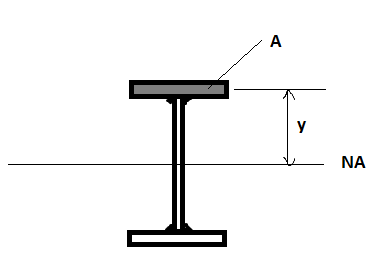- Log in to post comments

Longitudinal shear strength is required to ensure that two components of a beam act compositely in bending. Without the required strength at the interface, each component will be able to move relative to the other and when loaded in bending the two components will each carry some of the bending moment separately, with a much lower overall bending resistance.
Longitudinal shear stresses are highest in areas with high shear force (i.e. at the supports), because the rate of change of bending moment (shear force) is highest, and the connection is working harder to transfer more force across the interface.
Two situations where you might commonly use this calculation are:
- To size the weld between the web and flange of a plate girder
- To specify shear studs between the steel girder and RC slab of a composite deck
The cheat sheet provided has formulae for calculating shear flow in terms of stress and force per unit length, and provides strength data for commonly specified welds and shear studs.